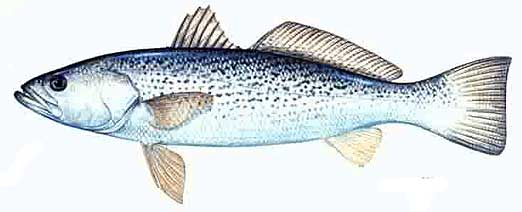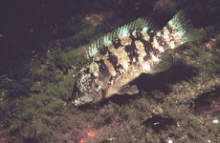- Details
-
Published: Tuesday, 30 January 2007 04:26
-
Hits: 12307
The fishing public appears overwhelmingly opposed to further cutbacks in the harvest of porgies.
That was the message that Thomas P. Fote, legislative chairman of the Jersey Coast Anglers Association and the New Jersey Federation of Sportsmen's Clubs, conveyed to members of the state Division of Fish and Wildlife and the Mid-Atlantic Fishery Management Council last week at a hearing in Toms River.
The assumption that the public is against more regulations can be gleaned from the fact that Fote represented two powerful sportsmen's organizations, and, further, no one appeared to say anything else.
"I was the only person to testify," he said. "No one else showed up."
The National Marine Fisheries Service is pushing for a 10-year rebuilding schedule on porgies - or scup as the species is known in management circles - and they want it done through an amendment to the fisheries management plan.
Opponents of inflexibility in fisheries management as required by Congress, warned that after the so-called fluke "fix" there would be the same problems with porgies, sea bass, and other species. It did not take long for this probability to kick in.
Once the 10-year schedule is in place, the biologists will pick an arbitrary target, and the noose will tighten on porgies as it has - and will continue to - with fluke.
Fote made this as clear at the hearing as the water off Monmouth Beach on a calm day in February.
"How can you think about a rebuilding schedule until you have a stock assessment?" he asked.
What the biologists and management officials probably have in mind, though they would not admit it, is another one of those arbitrary numbers. Radical environmentalists who want the fishery shut down bristle at the word arbitrary.
They claim it is science. In fact, it is a number so bogus that it would make Confederate money look acceptable by comparison at the supermarket checkout.
"I've been at this longer than most, and I've been asking for a stock assessment, and the commercial bycatch for years," Fote said. "NMFS and the council still have not addressed these problems.
"Many of us believe that the commercial discards alone total more than the entire recreational harvest," he said. "How can you set a target and put a 10-year-rebuilding plan into effect without knowing what the biomass is to begin with?
"You don't know how big the stock is and what the commercial bycatch is," he stressed. "One thing I do know is that you put the little guy - the person who fished off the docks and piers and bulkheads for porgies in the past - completely out of the fishery."
Fote pointed out that as a young boy he fished for porgies from the piers and bulkheads of New York City, and the fun and food he found there were never forgotten.
"You took that away from those people," he said. "There was no reason for it. We didn't catch a porgy nine inches long or over, and we weren't hurting the stocks.
"Making such decisions and putting plans into place with such poor science just because someone thinks there should be a bag limit or a minimum size is no excuse for hurting people," he said.
"Years ago - when the party boats used to sail from the north Jersey and Long Island docks - the porgy was one of the mainstays of the fishery," Fote reminded. "Now there are only a handful of boats fishing for them. And they're talking about more regulations?"
Fote said he will attend the Atlantic States Marine Fisheries Commission's winter meeting opening Monday and running through Thursday at the Radisson Hotel, 901 N. Fairfax St., Alexandria, Va.
"I'll be there asking about peer review on the fluke management plan and the time table," he said. "Fluke management has been a disaster this year, and we can't go past 2008 without peer review."
Fote said he will also ask that the commission go with a 50 percent probability of meeting the fluke plan's goal rather than 75 percent. The judge's decision in the much-touted environmental lawsuit of 2000 was 50 percent or better.
Patricia Kurkul, NMFS administrator for the northeast region, has lately been holding to the 75 percent level, and the recent decision to go with a quota of 17.1 million pounds is based on that. A higher quota would be possible at 50 percent.
"Why are we going with 75 percent?" Fote asked. "Just because Pat Kurkul wants it?"












